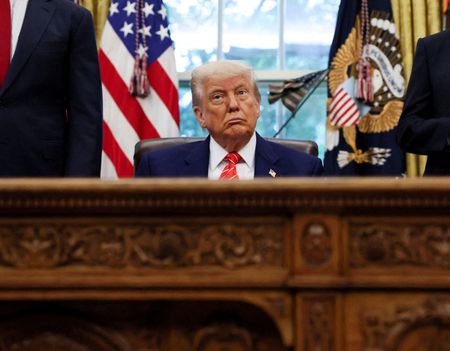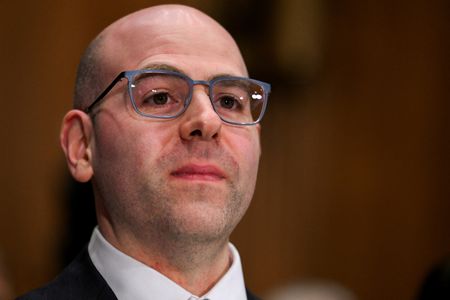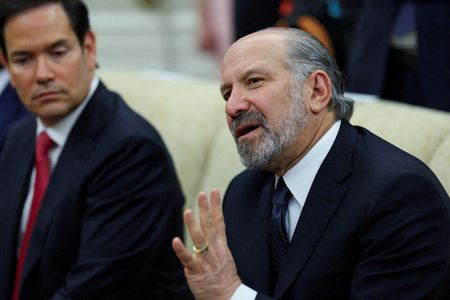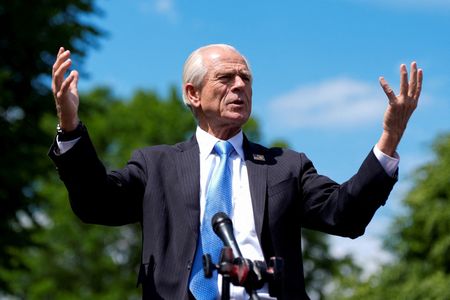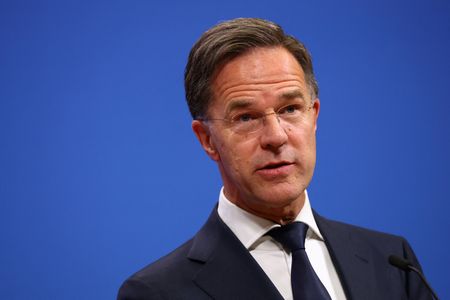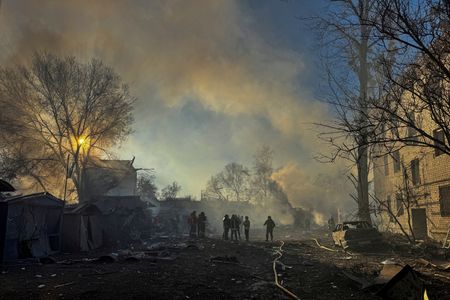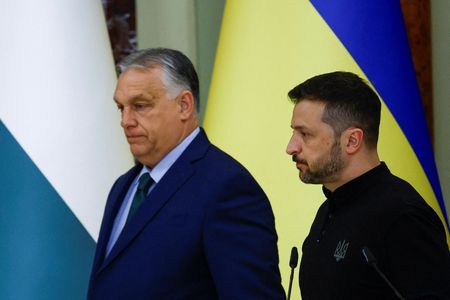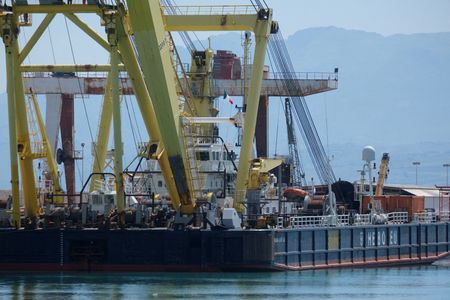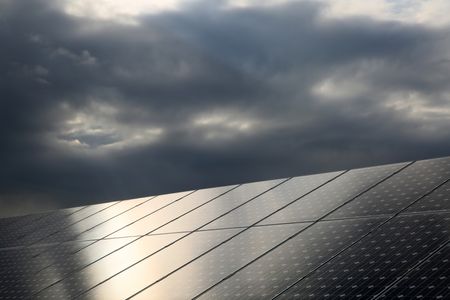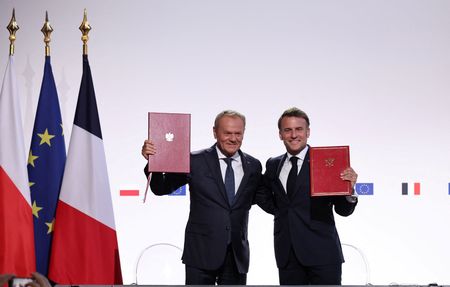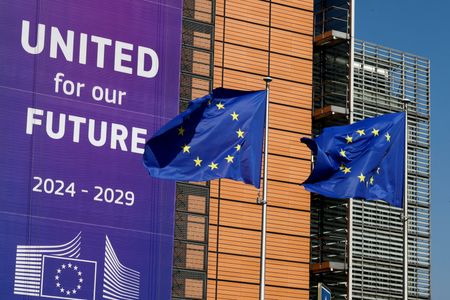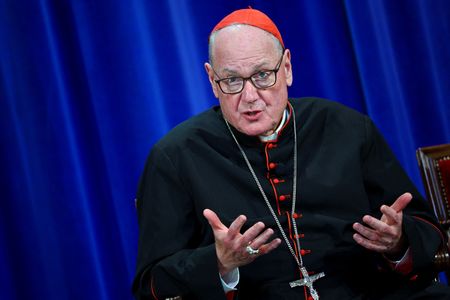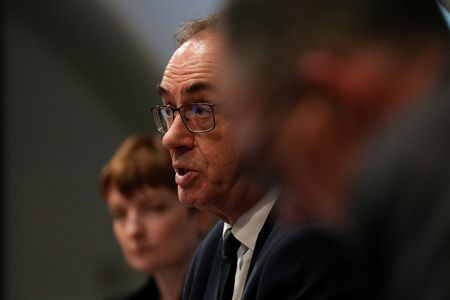By Paritosh Bansal, Davide Barbuscia and Jeff Mason
(Reuters) – To hear Donald Trump and some of his advisers tell it, trade tariffs will accomplish many things: stimulate the U.S. economy, bring home manufacturing jobs, raise tax revenues and provide America leverage to renegotiate security deals with its allies. Many economists believe those aims are too sweeping, or downright contradictory.
Reuters spoke to half a dozen current and former Trump advisers, some of whom differed sharply on the economic theory behind the president’s strategy. But one thing that most of them agreed on was that, once the dust settles from Trump’s trade negotiations, America will be left with higher tariffs.
Trump’s imposition of tariffs on imports last month has angered America’s trade partners, slowed the global economy and sent markets into wild gyrations.
It defied the consensus underlying the post-World War II global order that free trade leads to peace and prosperity. The Republican president says other countries have exploited that system, leading to a loss of U.S. manufacturing jobs and hurting working-class Americans, many of whom voted for him.
But investors, foreign governments and economists have struggled to understand the president’s strategy.
Stephen Miran, chair of the Council of Economic Advisers, the White House’s policy think tank, said Trump was crafting a new trade paradigm for the United States and played down the significance of swings in financial markets and economic data as a “short-term” impact.
“Given the historic scope and speed of the president’s actions to put American workers on fair ground with the rest of the world, of course there’s going to be volatility in the short term,” Miran said.
He said there was an optimal tariff rate for the United States that maximized tax revenues while benefiting the economy. “I feel very strongly that it’s a positive number. It’s higher than the two or three percent that came in with this administration,” Miran said.
Higher tariffs would raise hundreds of billions of dollars in tax revenue a year, facilitating domestic tax cuts that he said would stimulate growth.
In a paper he published in November, entitled “A User’s Guide to Restructuring the Global Trading System”, Miran cited research that under certain circumstances the optimal tariff rate for the United States is around 20%.
Asked about the paper, Miran said it predated his role in the White House and in no way “reflects administration policy.”
Peter Navarro, Trump’s senior counselor for trade and manufacturing, voiced support for the concept of an optimal tariff, saying in a statement to Reuters that it “clearly indicates a large country can improve its terms of trade by imposing tariffs.”
Navarro said trade deficits are undesirable because they shift jobs, production and ownership of assets abroad, which was why countries seek to run surpluses.
“When the deals start coming, as they will, the doubters will be silenced,” Navarro said. “This may be the last chance this nation has to turn this Titanic of unfair trade around.”
Trump announced a limited bilateral trade deal with the UK on Thursday that leaves in place 10% tariffs on British exports, modestly expands agricultural access for both countries and lowers prohibitive U.S. duties on British car exports. The president said more trade deals are in the works, and his team is due to begin talks with China over the weekend.
RECESSION RISK
Nouriel Roubini, an economist who rose to prominence for predicting the global credit crisis of 2008, previously worked with Miran and gave him feedback on the November paper on trade. Roubini’s baseline scenario is that tariffs will end up around 10% for most U.S. trading partners and around 60% for China.
Under that scenario, inflation would go towards 4% and the economy would stall by the fourth quarter, Roubini said. That would prompt the Federal Reserve to cut interest rates, making for “a short and shallow” recession.
“If instead, we’re well above that, then there’s a risk of a real severe recession, U.S. and global,” he added.
Trump said on Friday, as representatives prepared for weekend talks, that 80% tariffs on Chinese goods “seems right”.
The U.S. economy contracted in the first quarter for the first time since 2022, as trade weighed on the data. And opinion polls show that U.S. voters are growing concerned about Trump’s tariffs and handling of the economy.
Lawrence Summers, an economist who served in senior roles under Democratic presidents Bill Clinton and Barack Obama, also said a U.S. recession “now looks more likely than not” as a consequence of Trump’s policies.
“There are arguments for limited tariffs with limited objectives but not for the kind of broad-based tariff policies currently being pursued,” Summers said.
Miran said his team had modeled for the impact on the economy if tariff talks dragged on. He rejected concerns about any long-term damage, including to the dollar’s standing as the global reserve currency.
“The doom and gloom stories will fizzle out this time like they do every time,” he said.
After his April 2 tariff announcement, investors tested the president’s resolve by selling U.S. assets, sending the dollar, Treasuries and stocks sharply lower. That raised the specter of the return of bond vigilantes – investors who punish bad policy by making it prohibitively expensive for governments to borrow.
Trump relented, first suspending tariffs for 90 days to allow time for negotiations, and then making additional concessions.
The markets have since recovered most of their losses but the impact of uncertainty around tariffs persists. A key measure of risk embedded in Treasury bonds, which captures the premium investors charge for policy uncertainty, remains elevated.
Alfonso Peccatiello, chief investment officer of hedge fund Palinuro Capital, said uncertainty over Trump administration policies had increased the odds of bond vigilantism.
“I see bond vigilantes as a serious group of macro investors that rebel against policymaking, and they’re not going to stop until the policymaking is fixed,” Peccatiello said.
OLD GRIPE, NEW POWERS
Arthur Laffer, a long-time economic adviser to Trump, believes the president actually favors free trade. During Trump’s first term, Laffer said, they discussed using tariffs to force trade partners to allow freer trade in goods and services. “I do believe that’s what his objective is,” Laffer said.
But the 84-year-old economist sees Trump’s gambit as high-risk if the administration doesn’t strike trade deals soon. “The long-term damage from trade restrictions starts happening pretty quickly,” he said.
Trump has been railing against what he saw as America’s bad standing in global trade since long before he entered politics. In a 1987 open letter published as a full-page ad in major U.S. newspapers, he accused wealthy U.S. allies of freeloading off American military protection while running trade surpluses at the expense of the United States.
Three decades later when he first came to power, Trump did not act immediately.
Wilbur Ross, the former commerce secretary, said the administration had to figure out what powers the executive branch had on trade, independently of Congress. “We eventually found that there are very extensive ones,” Ross said.
In the second term, Trump has made wide use of executive orders, allowing him to impose or lift tariffs at will.
Second-term Trump has other advantages, Ross said, including control over the Republican Party and both houses of Congress. That, combined with steadfast support among his base, has given the president greater freedom to wield tariffs to address not just trade but other issues like national security and combating fentanyl trafficking, he said.
Roubini said that – amid a wide spectrum of opinion within the administration on trade – Trump had shown his worldview to be more aligned with hawks like Navarro than with moderates like Treasury Secretary Scott Bessent.
“The president is as protectionist as Navarro,” Roubini said. “It took the market reaction to have them back down.”
TIFFS OVER TARIFFS
In an essay in Project 2025, a set of conservative policy proposals that were published before the 2024 election, Navarro dismissed the idea that everyone benefits from free trade as an “ivory tower academic conclusion” that did not mirror the real world.
He stated that Trump’s protectionist impulse was stymied in the first term by a lack of support in his cabinet, with Jim Mattis, the then-defence secretary, resisting steel and aluminum tariffs.
“Mattis and I went head-to-head on this, and he finally relented, but he fought us at every step,” Navarro told Reuters. Mattis declined to be interviewed for this article.
The differences in opinion have continued in the second administration. Navarro squabbled publicly with billionaire Elon Musk, a key Trump adviser, who called him a “moron” for his views on tariffs.
Advisers differ at times on fundamental aspects of the economic theory of trade and tariffs. Stephen Moore, who served as a campaign adviser on the economy for Trump but is not in the administration, rejected the argument that global trade was primarily responsible for reducing manufacturing jobs in the United States. Instead, he blamed taxes, regulation and technology for the loss of blue-collar jobs over the years.
“Let’s just say this is not conventional free trade economics,” Moore said. He noted the effort to onshore manufacturing jobs may be misguided: “In five to ten years, there aren’t going to be any factory jobs. All that work is going to be done by robots.”
Laffer said Navarro and Commerce Secretary Howard Lutnick didn’t understand the economic benefits of running a trade deficit – that dollars used to pay for foreign goods are reinvested in U.S. capital markets: “We built our country on trade deficits and capital infusions.”
“Everything he says is just plain wrong,” Laffer said, referring to Navarro.
In response, Navarro pointed to China, saying it had seen foreign investment even as it ran trade surpluses. And he said Trump’s tariffs had already drawn large investment commitments.
“It’s ironic that the man famous for drawing the optimal tax curve on a napkin” doesn’t understand optimal tariff theory, Navarro said, referring to the “Laffer curve,” which posits that cutting tax rates can increase revenues by stimulating economic growth.
Lutnick did not respond to requests for comment.
(Reporting by Paritosh Bansal, Davide Barbuscia and Jeff Mason; Editing by Daniel Flynn)

